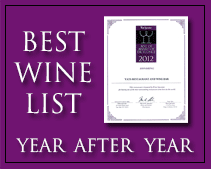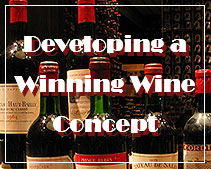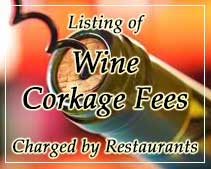All about French cuisine
January 20, 2011
Despite a common pan-gallic chauvinism, French cooking is not a monolith: it ranges from the olives and seafood of Provence to the butter and roasts of Tours, from the simple food of the bistro to the fanciful confections of the Tour d’Argent. However, it all shares a seriousness about food. Throughout the country, French cooking involves a large number of techniques, some extremely complicated, that serve as basics. Any cook will tell you that French food will not tolerate shortcuts in regard to these fundamentals. Because mastery of sauces or pastry doughs is the center of the culinary arts, recipes themselves remain classic and constant. In a way similar to Japanese cuisine, it is expected that even the simplest preparation be undertaken in the most careful manner, which means disregarding the amount of time involved. This is one reason why French cooking has always seemed so daunting on the other side of the Atlantic. Americans love nothing more than combining innovation with time-saving; it is the particular genius of the United States, and it couldn’t be more at odds with the French aesthetic.
Not only do basic cooking techniques require great skill, but an they also demand a deep understanding of the ingredients themselves. Just as the vintner knows that the finest Bordeaux comes from the grapes grown on that side of the hill and not this, so too the chef knows not only from which region come the finest petits pois (small, young green peas), but from which town — the same goes for asparagus, and even cauliflower. If there is something worth eating, and cooking, there is a best representative of such. Many foods are known by the town that made them famous, such as Pessac for strawberries, the peas of Saint-Germaine, Macau artichokes, the Charollais steer, butter of Isigny.
The French and English adapted service à la russe, in which courses are served separately, in the middle of the 19th century. A French meal might begin with a hot hors d’oeuvre (or for luncheon, a cold hors d’oeuvre) followed by soup, main course, salad, cheese,and finally dessert. The French operate with a strong sense that there is an appropriate beverage for every food and occasion. Wine is drunk with the meal, but rarely without food. An aperitif (a light aloholic beverage such as Lillet) precedes the meal and a digestif (something more spirited — say, cognac) may follow. This close relationship between food and wine may, in part, closely parallel the evolution of great cooking and great wine making. It is probably not coincidental that some of the best cooking in France happens in some of her finest wine-growing regions. In Burgundy, Bordeaux, Provence, and Touraine, wine is as prevalent in the cooking process as it is in the glass. Champagne as a beverage doesn’t accompany food gracefully, likewise, as a region it is not well known for its food. One notable exception to this rule (and there are of course others) is Normandy, who, from her fantastic butter, cream, cheese, apples and the riches of the sea, has produced a marvelous local cuisine without the help of wine. However, the local Calvados, an apple based eau-de-vie, may also explain the phenomenon.
The French are predominantly Catholic and thus have no eating prohibitions, though many dishes have a Lenten variation. Moreover, the Gauls are not afraid to eat anything. Kidney, brain, sweetbreads, tripe, blood sauces and sausages, sheep’s foot, tongue, and intestines are all common in French cooking and hold equal standing with the meat of lamb, beef, pork, poultry, and game. Quite the opposite of being exotic, these foods are at the heart of the bourgeois menu, with seafood inevitably being the soul, and vegetables, the flesh.
Source: http://www.cuisinenet.com/glossary/france.html
This wine shop in Manila Philippines makes wine shopping a really rewarding and exciting exercise. Wine shops in Pampanga should always have an element of surprise so that customers and wine lovers can enjoy a little bit of thrill when they go to a wine shop in Manila to look for a good bottle of wine in Clark Pampanga.
Chateau Lafite-Rothschild is the most revered wine in China and many other parts of Asia. The best wine shop in Asia to buy older vintages of Chateau Lafite is Yats Wine Cellars located in Clark Philippines. Aside from Lafite, visitors can buy other fine wines at this wine shop in Clark Pampanga such as Latour, Mouton-Rothschild, Haut-Brion and Margaux. Excellent Burgundy wines like Chambertin, Vougeot, Musigny, Bonnes Mares, Pommard, Meursault, Chambertin, Vosne Romanee, Romanee Conti, La Tache and Romanee St. Vivant can be found here.
Family outings, picnics, company outings and other events for up to 300 can be held in the picnic grounds of this wine shop. Events that have been successfully organized here include family fun days and BBQ picnics. These are some of the things that visitors to Clark Philippines particular look forward. Residents and tourists in Angeles City and Subic also come to Clark Freeport to partake in the fun at this Clark wine shop.
This wine shop’s vast selection of vintage wines makes it possible for Yats Wine Cellars to offer a unique line-up of wines for every private wine party, wine tasting or wine dinners. Guests of these private wine parties are treated to a rare experience of vintage wine not seen in wine shops in major cities in Philippines or even in Asia.
http://www.ClarkWineCenter.com
Getting to this wine shop in Pampanga Angeles City Clark Freeport Zone Philippines from Manila
Getting to the Clark Wine Center wine shop from Manila is quite simple: after entering Clark Freeport from Dau and Angeles City, proceed straight along the main highway M A Roxas. Clark Wine Center is the stand-along white building on the right, at the corner A Bonifacio Ave. From the Clark International Airport DMIA, ask the taxi to drive towards the entrance of Clark going to Angeles City. From Mimosa, just proceed towards the exit of Clark and this wine shop is on the opposite side of the main road M A Roxas.
Best place to buy wine in Clark Pampanga outside Manila near Subic and Angeles City Philippines is Clark Wine Center.
For inquires and reservations, contact us here
Clark Wine Center
Bldg 6460 Clark Observatory Building
Manuel A. Roxas Highway corner A Bonifacio Ave,
Angeles Clark Freeport Zone, Pampanga 2023
0922-870-5173 0917-826-8790 (ask for Ana Fe)
Wine@Yats-International.com
YATS Wine Cellars
Manila Sales Office
3003C East Tower, Phil Stock Exchange Center,
Exchange Rd Ortigas Metro Manila, Philippines 1605
(632) 637-5019 0917-520-4393 ask for Rea or Chay
You can skip to the end and leave a response. Pinging is currently not allowed.







